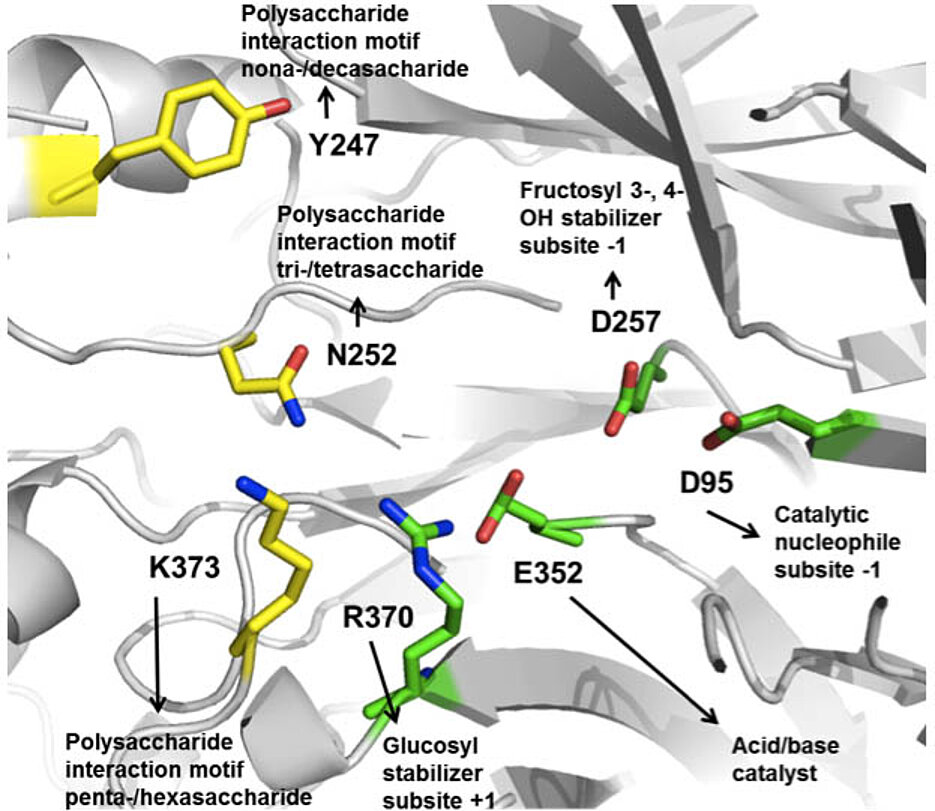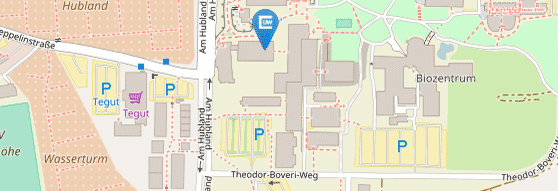A sugar manufacturer from the laboratory
31.03.2011Researchers from Würzburg and Braunschweig have deciphered how a particular enzyme naturally constructs large sugar molecules. Armed with this knowledge they can now produce customized sugar for use in the food industry as prebiotics.

Visually, the world of sugar is a bit like a large box of LEGO bricks. There are big blocks and small blocks; some are red, others are blue or even yellow perhaps. As for sugar, there are basic molecules, such as glucose or fructose, lactose or galactose, which can be combined – just like the colored LEGO bricks. If glucose and fructose join together, chemists call this saccharose.
Now, anyone with sufficient imagination to picture how all these blocks can be connected in different sequences to create chains of varying lengths, with branches forking off them all over the place, will have some idea of the complicated world of sugar.
Jürgen Seibel’s research on sugar
Jürgen Seibel devotes most of his attention to sugar molecules like these. Seibel is a Professor of Organic Chemistry at the University of Würzburg; together with his team, he tracks down biologically important sugar compounds, reconstructs them in the laboratory, and examines their functions.
One of these sugar compounds is known as levan. With the support of chemists and biologists from the University of Würzburg, the Technical University of Braunschweig, and the Helmholtz Centre for Infection Research (Braunschweig), Seibel has now managed to uncover crucial details of the makeup of this sugar molecule. His findings will be published this week in the Journal of Biological Chemistry.
Sugar is also essential for bacteria
Long sugar chains – chemists call them polysaccharides – perform key functions in plants, microorganisms, and humans. In certain configurations, of which levan is one, they are vital to bacteria. They support their growth and as a result are indirectly involved in the creation of healthy intestinal flora, for example. Conversely, they are also responsible when bacteria form a biofilm and accumulate to create that dreaded plaque on teeth and gums. On the other hand, if they did not exist, pathogenic bacteria would not be able to multiply.
“Responsibility for the creation of fructans of the levan type lies with an extracellular bacterial enzyme, levansucrase,” explains Jürgen Seibel. This enzyme releases the glucose from the sugar saccharose and combines the freed residue to create levan. It has its work cut out: levan consists of 16,000 fructose units. However, it was not clear until now how the enzyme actually achieves this.
“We have managed for the first time to identify, on the surface of the enzyme, portions and amino acids responsible for chain growth that interact with the growing polymer,” says Seibel. The chemist is fascinated by the speed at which the enzyme goes about its work: it links 2000 fructose molecules together in a chain like pearls every second.
Use in the food industry
This discovery is not only useful as basic knowledge of the creation and breakdown of this sugar. As Seibel says, there could also be an industrial use for it: “With our new-found molecular knowledge we have succeeded in tailoring polymer creation and using the enzyme as a synthesis machine for smaller sugars.”
Such smaller sugars could find a use in the food industry, for example. The keyword here is “prebiotics”. As an additive in yogurts or baby food, they serve as nutrition for particular intestinal bacteria and thus indirectly exercise a health-promoting influence on the person’s intestinal flora.
The research was funded by the German Research Foundation within the scope of the Collaborative Research Center 578 “Development of Biotechnological Processes by Integrating Genetic and Engineering Methods – From Gene to Product”.
“Polysaccharide synthesis of the levansucrase SACB from Bacillus Megaterium is controlled by distinct surface motifs”, Christian P. Strube, Arne Homann, Martin Gamer, Dieter Jahn, Juergen Seibel and Dirk W. Heinz. J. Biol. Chem. jbc.M110.203166. First Published on March 25, 2011, doi:10.1074/jbc.M110.203166
Contact: Prof. Dr. Jürgen Seibel, T: +49 (0)931 31- 85326, e-mail: seibel@chemie.uni-wuerzburg.de
Link: Prof. Dr. J. Seibelwww-organik.chemie.uni-wuerzburg.de/lehrstuehlearbeitskreise/seibel/
28.03.2011, 09:14 Uhr


